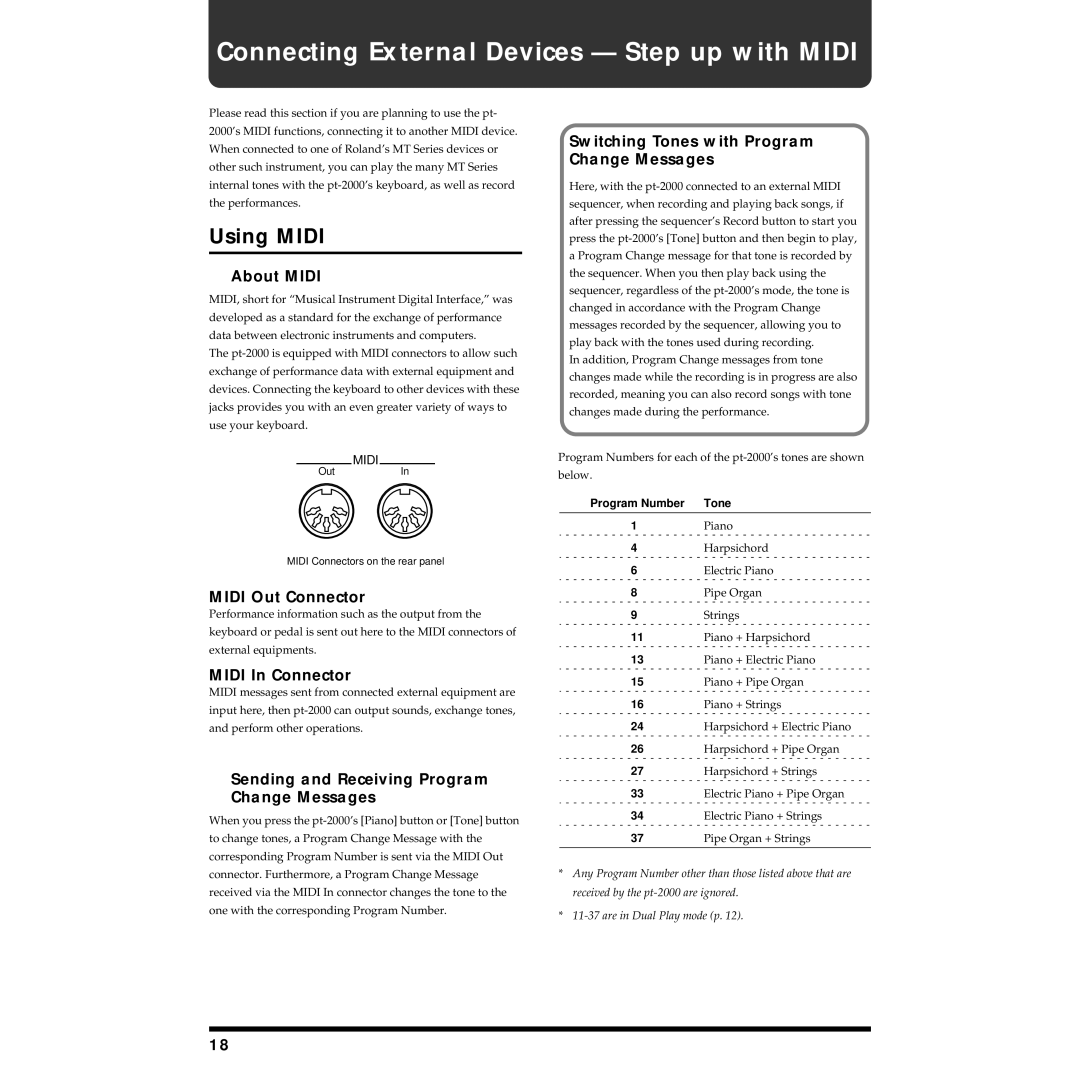pt-2000 specifications
The Roland PT-2000 is a standout model in the realm of musical instruments, specifically designed for both budding musicians and seasoned professionals seeking a reliable and versatile keyboard workstation. With its blend of innovative technology, user-friendly features, and robust sound engines, the PT-2000 sets a new standard in digital keyboards.One of the main features of the Roland PT-2000 is its extensive range of high-quality sounds. Boasting over 1,000 onboard sounds, it includes a comprehensive library of acoustic instruments, synthesizers, and sound effects that cater to various musical genres. This rich and diverse sound bank enables musicians to explore and experiment with their creativity, providing them the tools necessary to compose, arrange, and perform seamlessly.
The PT-2000 is powered by advanced sound synthesis technologies that elevate its performance capabilities. With its SuperNATURAL technology, the keyboard delivers incredibly realistic instrument sounds that closely mimic traditional acoustic performances. This technology ensures that every nuance of playing dynamics is captured, providing a highly expressive experience for the user.
Additionally, the PT-2000 features an intuitive interface, making it easy for musicians to navigate through its array of functions. The large, backlit display provides clear visibility, allowing for effortless selection of sounds, effects, and settings even in low-light conditions. The user-friendly controls, including sliders and knobs, enable real-time manipulation of parameters, making live performance adjustments straightforward and engaging.
The keyboard also comes equipped with a variety of connectivity options, including USB, MIDI, and audio outputs. This flexibility makes it easy to integrate the PT-2000 into any existing music setup, whether it be in a studio or live performance environment. Furthermore, the inclusion of built-in effects and a robust sequencing engine opens the door for endless creative possibilities, allowing users to layer sounds, create complex arrangements, and add unique touches to their compositions.
In terms of portability, the PT-2000 strikes a perfect balance between functionality and convenience. Its lightweight design and durable construction make it an ideal choice for musicians on the go, without sacrificing performance quality.
Overall, the Roland PT-2000 stands out as a remarkable keyboard workstation that combines advanced technology, comprehensive features, and user-centric design. It is an excellent choice for musicians looking to expand their creative horizons while enjoying the reliability and performance for which Roland is renowned.

